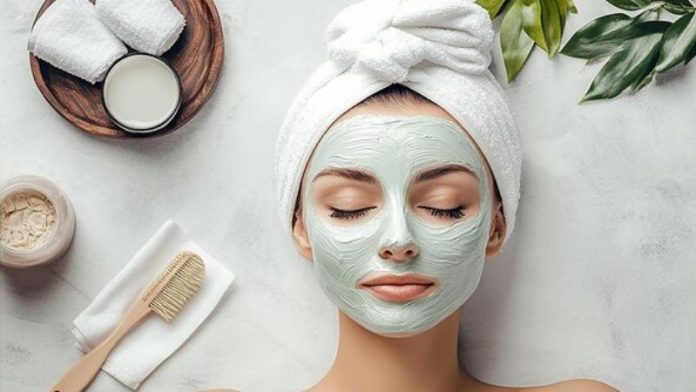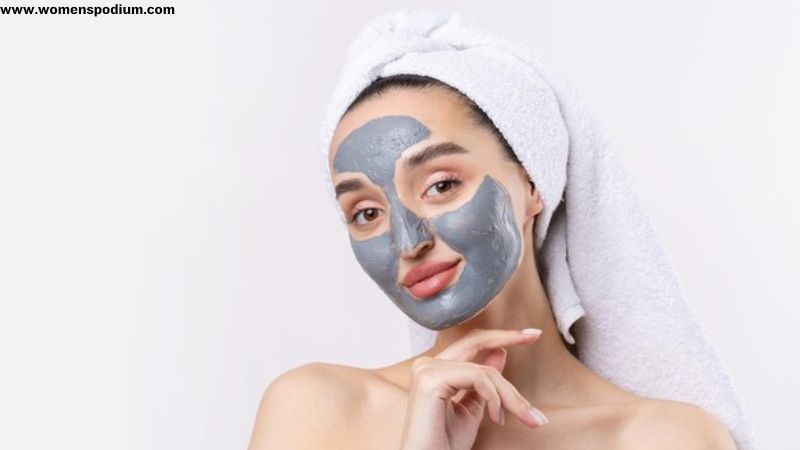
Face masks are essential in every skincare routine for anyone, whether the skin type is oily or dry. Skincare feels like offering a spa-like experience at home. However, how often should you use a face mask, and what’s the correct way to get the most benefit out of your skincare?
Using a face mask is simple. Whether it is a scrub mask, a wash-off mask, a peel-off one, a sleeping mask, or a collagen sheet mask, there is a particular way of using it. Whether you’re new to face masks or looking to perfect your masking routine, understanding how to apply them properly can make a remarkable difference in your skincare results.
How Often Can You Use A Face Mask? A Quick Answer!

A brief and simple answer would be “It depends.” The frequency of using your face mask in your skincare routine depends mainly on your skin’s requirements and the type of masks you usually use. It also depends greatly upon your skin type and the time for how long you need to keep each mask on your face. When it comes down to face masks, you need to find your skincare pattern. These tips will help you decode your self-care.
Key To Achieve Radiant Skin: Finding the Perfect Balance!

But how often should you use a face mask though? Is it ok daily or once a week? All women should find their perfect frequency of using a face mask. But for each skin type, there are certain routines one must follow!
1. The Golden Rule: Twice a Week!
In general, twice a week is good for most skin types. Overdoing this routine can lead to irritation or dry skin while using masks less than once a week does not show you the desired benefits. So, all non-sensitive skin types can use masks 2-3 times a week.
2. The Ideal Routine for Dry Skin
Generally, skincare for dry skin includes a face mask, like a sheet mask or cream mask, that can hydrate skin if used every two days. Opt for masks containing hydrating agents like hyaluronic acid, aloe Vera, or essential oils. These types of masks efficiently seal the moisture into your skin. However, peel-off masks cause drying and they should not be used more than once a week.
3. For Oily or Combination Skin
Oily and combination skin types require more exfoliation and cleansing to remove excess sebum. Including scrub masks in your routine, twice a week can benefit you. Additionally, masks containing salicylic acid, clay, tea tree oil, or charcoal, absorb excess oil and clean pores so they can be used twice a week. However, peel-off masks can be used weekly to keep pores clear.
4. Is Three Times Per Week Too Much?
If you decoded your skin type and figured out the right type of masks for your face, you can most certainly have a routine of using them 3 times per week. It is not only beneficial for your skin but also helps regenerate the skin cells as well as exfoliate for the best glow-up. This frequency is good for hydrating masks, however, if you are applying clay or peel-off masks then you should tone down a bit to maybe once or twice a week.
5. Ideal Frequency Per Month!
If you calculate and sum up an average frequency of use for your facial skincare, it would be around 8 to 12 times a month on average. However, depending on your skin’s need and type you can switch up or tone down the use of face masks as you see suitable for yourself. Adjust your use according to seasonal changes, skin conditions, and certain concerns.
Also Read: Having a proper skincare routine not only keeps your skin hydrated but also replenishes and lightens your skin tone for exuding radiance.
How To Apply Each Mask? A Step-by-Step Guide!

Here’s your step-by-step instruction guide to achieve an optimal skincare routine by learning how often should you use a face mask and how to apply it for the best results.
1. Face Prep: Cleansing and Exfoliation!
Before you apply any skin product or mask, you need to exfoliate your skin. Cleansing not only removes extra oil, sebum, and dirt with any remnants of full coverage makeup that you did that morning. It also allows the masks to get absorbed better. Exfoliation after cleansing further removes dead skin cells. This creates a smooth surface for the mask to work its magic.
- Scrub Masks: Exfoliating is crucial for dry or flaky skin. These masks help unclog pores and exfoliate your skin. Applying this scrub mask requires you to massage it onto your skin for about 5-10 minutes, then rinse off. Exfoliation is important before a mask because it helps your skin absorb moisture efficiently.
Pro tip: However, according to some recent studies, if you leave it for more than 10 minutes, it will strip off your natural protective sebum layer as well. So keep it on the watch.
2. Picking the Right Masks
Once your skin is ready, it’s time to pick a mask for your skin type. There are several types of face masks, and this is how often you should use a face mask depending on your skin’s need.
- Peel-Off Masks: They are best for acne-prone or oily skin because they remove all the impurities and treat different types of acne by cleaning pores. Apply an even layer, then allow it to dry for about 5 minutes, and peel it off from the bottom to the top.
Pro tip: Peeling off in the opposite direction is important to unclog the pores. However, it is recommended to use this mask not more than twice a week.
- Sheet Masks: These masks are serum and work wonders if your skin needs hydration. You can use the most popular Korean sheet masks as they are super hydrating for your skin. Gently placing the mask over your face, leaving for around 15 minutes, and taping the moisture give you the best results.
Pro tip: Although these are hydrating masks, they will pull away the natural moisture of your skin if you leave them on for longer than described in the instructions.
- Wash-Off Masks: These masks are usually cream or clay-based, and are perfect for detoxification purposes. The best way is to apply a mask, leave for 10-15 minutes, and then rinse for best results. You will not only get hydrated skin but also get a thorough cleansing service.
Pro tip: Usually the wash-off masks dry off in 10 minutes and you can wash them gently 5 minutes after drying. However, letting them stay on for longer dries your face drastically.
3. Aftercare: Locking in Moisture!
Once you’ve taken your mask off, don’t stop there! Post-mask care is as important as masking routine. After you take off your sheet or wash off your mask, avoid rinsing your face immediately after unless directed. Instead, gently tap all the remaining goodness and essence into the skin. Applying a toner or Aloe Vera gel after facial masks helps ensure your skin gets the most benefits by balancing the pH levels. After this, put on a moisturizer to seal the hydration.
4. Post-Mask Care for Radiant Skin
Study finds that if you use overnight masks, simply washing off the mask in the morning can rejuvenate your skin. After any mask, tap in the remaining product instead of wiping it off to help your skin look radiant and retain moisture.
5. Check If Your Mask Is Causing Irritation
Suppose your face mask irritates your skin—whether due to sensitivity or an allergic reaction—immediately wash it off. A gentle toner can always neutralize the skin after skincare and help reduce redness or irritation.
If the irritation persists, it is best to consult a dermatologist or Skin specialist. They might give you a topical prescription or ointment to cure the irritation and you can discuss what’s best for your skin and what’s not! Always do a patch test of masks or serums on a small part of your skin to avoid any minor reactions.
Conclusion
Incorporating face masks into your skincare routine can be a game-changer for achieving radiant skin. Whether you have dry, oily, or combination skin, the key is to find the right mask and know how often should you use a face mask. Remember, twice a week is a good rule of thumb, but always listen to your skin’s needs. Proper application and aftercare are essential to get the most benefits of your face mask and give your skin the nourishment it deserves.
Also Read: Every skincare regime includes a moisturizer, a toner, and some face masks. They can rejuvenate your skin depending on your skin type.





